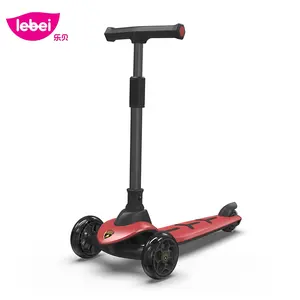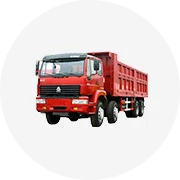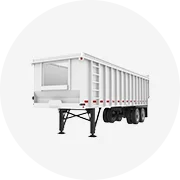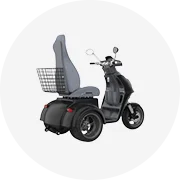
Scooters Manufacturer Lamborghini Custom High Quality 3 Wheel Kid Baby Child Plastic Kick Scooters Foot Scooters Toy For Kids


Mobility Scooter Manufacturer Hot Selling Intelligent Automatic Light Foldable Electric Mobility Scooter For Sale



















In an era where efficiency and agility are paramount for business success, stand up gas scooters are emerging as a game-changer in urban mobility. These nimble vehicles offer a unique combination of economy, performance, and convenience, making them an increasingly popular choice for professionals and enterprises alike. As we delve into the world of stand up gas scooters, we'll explore their types, features, and the materials that make them both durable and reliable. Whether you're a business owner looking to optimize your team's transit or an individual seeking a cost-effective commute, this ultimate guide will steer you through the ins and outs of choosing and utilizing stand up gas scooters for your business needs.
As urban landscapes become more congested, stand up gas scooters provide a smart solution for navigating through busy streets.
Stand up gas scooters have emerged as a versatile mode of transportation, appealing to a wide demographic from teens to active adults. These two or three-wheeled vehicles are powered by gas, offering an economical alternative to traditional transport. They are particularly suitable for short commutes such as traveling to work, school, or for local errands. The market offers a variety of models, each designed to cater to specific preferences and requirements. The diversity in the selection allows potential buyers to compare and choose based on their particular needs, ensuring that there is a scooter for every type of user.
Stand up gas scooters have become a versatile option for business mobility, offering a blend of performance and convenience. When considering the key features and specifications, potential buyers should note the engine type, which ranges from 49cc 4-stroke to 2-stroke models, with the 4-stroke engines typically providing a balance of power and fuel efficiency. Speed is a crucial factor, with some scooters capable of reaching up to 37 mph, making them suitable for various business applications. Fuel economy is another important aspect, with certain models boasting up to 50 miles per gallon, which can translate to cost savings in the long run.
Additional features to consider include safety enhancements such as rear mirrors and light packages, which are essential for visibility and compliance with road safety regulations. The inclusion of a luggage rack basket adds to the practicality for business use, allowing for the transport of goods or equipment. For businesses looking to customize their fleet, performance parts and accessories are available, enabling the tailoring of scooters to specific needs or preferences. Lastly, the design of these scooters often allows for the addition of a seat kit, which can provide flexibility in how they are used, either as a stand-up or sit-down mode of transportation.
The materials used in the construction of stand up gas scooters are indicative of the durability and performance one can expect. Carbon Fiber Reinforced Polymer (CFRP) is known for its durability and lightweight properties, offering flexibility in design and vibration dampening, which contributes to a safer ride. Titanium, renowned for its strength and lightweight, is resistant to temperature changes, corrosion, and rust, enhancing the longevity and look of the scooter.
Aluminium's popularity stems from its combination of strength and lightness. It's widely used in various transportation manufacturing processes due to its ability to withstand harsh conditions and resist corrosion. Additionally, aluminium is notable for its conductivity and resistance to UV rays. For businesses concerned with sustainability, aluminium stands out due to its recyclability and the lower energy requirements in its production.
When selecting materials for stand up gas scooters, the balance between weight, durability, and cost is crucial. While carbon fiber is the lightest, aluminium is typically the most cost-effective, with titanium offering a middle ground. Some models may combine these materials to optimize performance and durability. The choice of material will significantly influence the scooter's weight, portability, and ultimately, its utility in a business setting.
The rising trend of gas motor scooters, particularly for business use, presents several advantages. Their cost-effectiveness is evident as they offer a more economical alternative to traditional vehicles, especially with the increasing fuel prices. The compact size of scooters allows for easier parking, often at lower costs, and the ability to navigate through traffic more efficiently, ensuring timely arrivals for business appointments.
Modern scooters come equipped with features aimed at enhancing comfort, such as ergonomic seats and temperature control, which are conducive to a pleasant riding experience during business commutes. Additionally, the environmental aspect is noteworthy, with the industry moving towards reduced emissions, offering models that are less harmful to the environment.
However, it's important to consider the limitations and safety concerns associated with riding scooters. The lack of protective barriers compared to cars means riders are more exposed to the elements and potential road hazards. Appropriate safety gear and attire are essential to mitigate these risks. Despite these concerns, the benefits of gas scooters, including their practicality and environmental friendliness, make them an attractive option for business mobility solutions.
When selecting a gas scooter for business needs, it's essential to consider several factors to ensure you make an informed decision. Begin by establishing a budget, which will guide the scope of your options. Next, think about the scooter's intended use, such as the type of terrain it will navigate and whether it will be used on highways, which may influence the engine size you require. Engine sizes vary widely, from smaller 50cc models to larger 650cc options.
Local regulations should also be a key consideration. Check with your local DMV or law enforcement to understand the specific requirements for operating gas scooters in your area, including whether a special driver's license is needed or if there are restrictions on engine size for certain roads. Additionally, consider the number of riders and the potential cost of insurance.
The choice between purchasing from a local dealer or online can also impact your decision. Local dealers may offer full service and support, while online purchases might provide cost savings. Regardless of where you purchase, focus on the scooter's features, such as fuel efficiency, maintenance requirements, and durability, to ensure it meets your business's operational needs.
Stand up gas scooters, while fun and convenient, come with a responsibility to adhere to safety rules to prevent accidents. It's crucial to recognize that scooters are legitimate motor vehicles and are subject to the same laws and regulations as other vehicles on the road. To ensure safety, riders should stay vigilant, obey speed limits, and maintain a safe following distance to allow for adequate reaction time.
Accidents often occur due to speeding and tailgating. Maintaining a safe speed and distance can give you the necessary time to react to sudden stops or lane changes by other drivers. This proactive approach to driving can significantly reduce the risk of collisions.
For younger riders without a driver's license, proper training is essential. Before allowing a child to ride on busy streets, they should be thoroughly trained on a deserted road to ensure they understand the safety rules of the road. This training can help mitigate the risks associated with inexperienced riders mingling with regular traffic.
Finally, all scooter riders should be predictable and courteous on the road, avoiding erratic movements that could endanger themselves and others. By following these safety measures and best practices, we can promote a safer environment for both scooter riders and other motorists.
Maintaining your stand up gas scooter is crucial for its longevity and performance. Regular cleaning is essential; it not only maintains the scooter's appearance but also prevents corrosion. After riding in dirty conditions, it's important to rinse off any debris and ensure no water infiltrates sensitive engine parts like the air filter or spark plug.
Tire pressure checks are a simple yet vital maintenance task. Correct tire pressure is not only a safety measure but also reduces tire wear and improves fuel efficiency. Ensure the pressure can support the scooter's weight along with any additional load.
Stay vigilant with your scooter's fluids, including engine oil, coolant, and brake fluid. For frequent use, consider changing the oil biannually, brake fluid biennially, and coolant as advised by your usage or manufacturer's guidelines.
The air filter is the engine's lung; keeping it clean is imperative. For non-metal mesh filters, use specific oils to repel dust. Clean the filter regularly, especially if you ride in dusty areas, and replace it immediately if damaged.
Lastly, the carburetor's health is paramount for smooth operation. Regularly check and adjust the idle speed and air/fuel mixture. Clean the carburetor with appropriate solutions, especially if the scooter has been idle for a while, to prevent clogs from residue build-up.
Stand up gas scooters represent a blend of practicality and innovation in business mobility. From the variety of models catering to different business requirements to the key features that enhance performance and safety, these vehicles are tailored for the modern professional landscape. The materials used in their construction, such as CFRP, titanium, and aluminium, ensure durability while balancing cost-effectiveness. The advantages they offer, including economic fuel consumption, ease of parking, and reduced emissions, position them as a smart choice for businesses. However, it's crucial to weigh these benefits against the safety considerations and maintenance requirements to ensure a responsible and sustainable integration into your business operations. By carefully selecting the right model that aligns with your business needs and adhering to safety protocols, your investment in stand up gas scooters can lead to improved efficiency, cost savings, and a step forward in eco-friendly practices. As we conclude, remember that the right scooter can rev up your business mobility, making every ride a stride towards a more agile and cost-effective future.